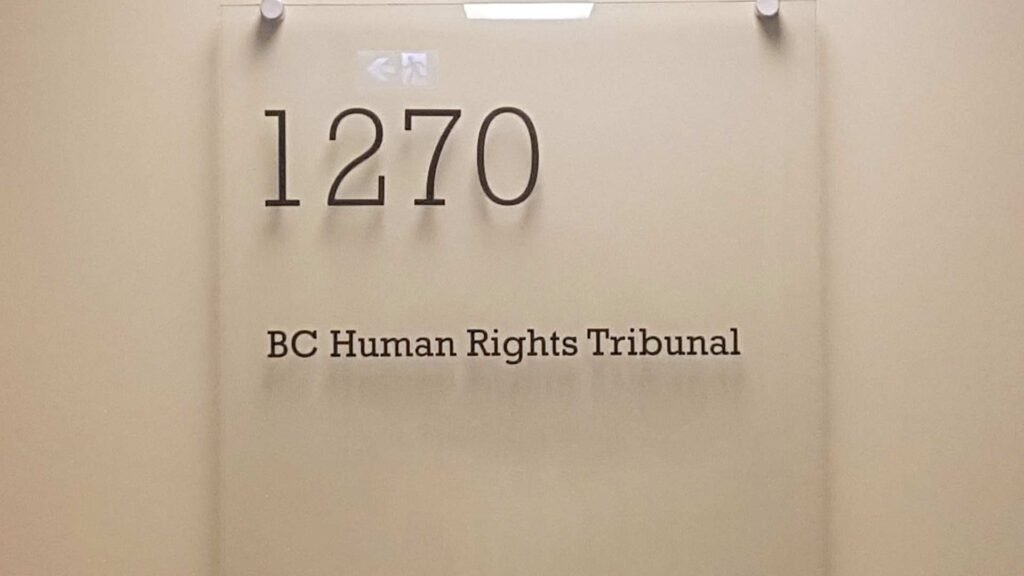A person who suspects that discrimination was involved in the treatment received in a range of everyday interactions with others may find that the BC Human Rights Code applies to his or her situation.
The BC Human Rights Tribunal hears human rights complaints from persons who believe they have experienced discrimination by an employer, an organization, a landlord or a service provider. If discrimination is proven, the Tribunal can award compensation for injury to dignity and self-respect, wage loss, lost opportunity or other lost benefit. It can order reinstatement of a job. The Tribunal can make awards of any amount. Awards for injury to dignity range from $3000 to $50,000.
Persons who experience discrimination in the following areas may make a claim.
Publications; accommodation, a service or facility; the purchase of property; tenancy premises; employment advertisements; wages; employment; unions and associations.
Claim requirements
There are three requirements for a successful human rights claim.
- The person must have a characteristic that is protected by the Code. That means one of the following characteristics. Some characteristics do not apply in all cases.
Indigenous identity, race, colour, ancestry, place of origin, political belief, religion, marital status, family status, physical or mental disability, sex, sexual orientation, gender identity or expression, age, conviction for a criminal or summary conviction offence and lawful source of income.
- The person experienced an adverse impact with respect to a characteristic protected by the Code.
- The complainant proves that the protected characteristic was a factor in the negative treatment.
Complainants can provide proof by direct evidence or by inference. Direct evidence can be oral testimony at a hearing. There can be valid grounds for dismissal of an employee, but if even a small part of the reason for dismissal is based on discrimination, the application of the BC Human Rights Code can be proven. Corroboration of oral testimony adds to the weight of evidence.
Proof by inference is harder to establish. It is a logical conclusion drawn from the evidence. Proof cannot be based on mere speculation and belief. For cases involving indigenous clients, submissions on systematic racism are now widely accepted as relevant on this point.
The employer’s intention not to discriminate does not matter to the Tribunal. It is the effect of the discrimination that is examined by the Tribunal.
Defences
There are a number of defences.
- In an employment situation, the employee needs to have notified the employer of the need for accommodation. Failure to do this can result in the employer being excused. This excuse will not be valid if the employee is missing a lot of work, and the employer fails to enquire.
- Occupational requirement. Certain occupations require the exclusion of some persons. For example, a fireman may need to be able to lift a person out of a burning building. This will exclude some persons with physical disabilities.
- Undue hardship. For smaller businesses, such as mom-and-pop stores, the Human Rights Tribunal can accept that they do not have the resources to accommodate the individual. It may not be possible for the employer to accommodate a wheelchair.
- Frustration. A respondent can argue that frustration of contract applies. This means that neither party caused the lack of accommodation. For example, the parties may have experienced an unforeseen situation or event for which they made no previous provision. The situation cannot be self induced or the fault of either party. It must create a radical change in the nature of the contractual obligations.
There is a one-year limitation period from the date of the discriminatory act to file a claim.
The complaint process.
The process starts with the party alleging discrimination filing a complaint and setting out the details of the discrimination. The Human Rights Tribunal will examine the complaint to see if the alleged discrimination is with respect to one of the protected characteristics.
If the complaint proceeds, the respondent must file a complaint response form. The parties can choose mediation in advance of a hearing. Mediation must be approached cautiously. If successful, mediation could shorten the process. However, if there is no settlement, the parties will have wasted a lot of time and expense, because the mediation process requires that the mediator listen at length to the witness evidence. This time-consuming exercise will have to be repeated for the eventual hearing.
